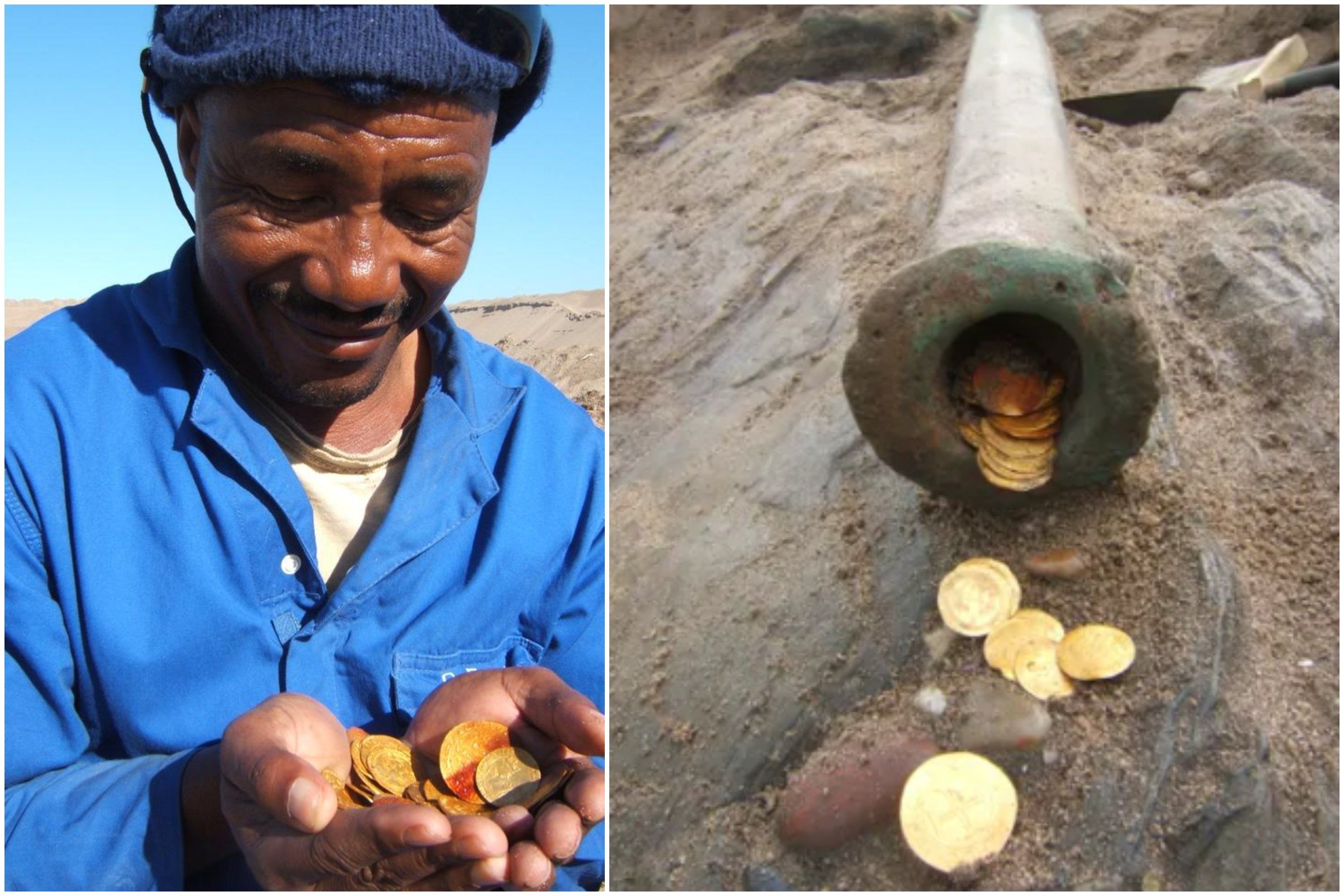- Dapatkan link
- X
- Aplikasi Lainnya
Among the most notable shipwreck discoveries of recent times were found in what seemed like an improbable location: a southwestern area African desert .
The Bom Jesus (The Good Jesus), a Portuguese The vessel embarked on a journey to India from Lisbon starting on March 7, 1533, but it encountered a catastrophic storm shortly after setting sail.
The ship, carrying valuable cargo, vanished mysteriously until 2008 when its wreckage was found alongside approximately $13 million worth of gold coins.
It was unearthed by diamond Miners in a desert along Namibia's coastline, who had pumped out water from an artificial lake in the region.
Dr. Dieter Noli, who leads the Southern Africa Institute of Maritime Archaeological Research as their top archaeologist, mentioned that he anticipated miners would eventually stumble upon a shipwreck someday.
Indeed, the Namibian miners, who worked for the diamond company De Beers, called Dr Noli as soon as they made the find, since he had been telling them for more than a decade what to look for.
"Since beginning my archaeological efforts for the mine back in 1996, I had spent twelve years telling them that 'someday' they would discover a shipwreck and should inform me when it happens," he explained. Fox News back in 2016.
“When asked what exactly I was really anticipating to discover, I mentioned 'a Spanish blade and a sack of gold.'"

However, it took nearly an entire week before a treasure chest filled with gold was discovered during the ship’s excavation.
“As luck would have it, we found the treasure chest on day six,” Dr Noli recounted.
“Academic arguments are all very well, but once you have literally filled your hat with a 25.5lb mixture of Spanish and Portuguese gold coins (there were indeed swords as well), the value of the site is no longer in doubt.”
It was at this point that the ship was confidently identified as the Bom Jesus, which records showed had been loaded with tin, ivory tusks, and 44,000 pounds of copper ingots, as well as gold.
In fact, the copper ingots ended up playing a key role in the wreck’s preservation since, according to Dr Noli: “Marine organisms may like wood, leather book covers, peach pips, jute sacking and leather shoes, but copper really puts them off their food – so a lot of stuff survived the 500 years on the bottom of the sea which should really not have done so.
This all contributes to an exceptionally rare circumstance, leading to remarkably good preservation of what was already an inherently one-of-a-kind location.
Overall, the digging up of the ship resulted in thousands of Portuguese and Spanish gold coins, Portuguese silver coins, bronze cannons, tons of copper ingots, over fifty elephant tusks, navigation tools, kitchenware, as well as swords and muskets.
Dr Noli told news.co.au Over 2,000 gold coins were discovered along with five anchors, three navigation tools, and fragments of a ship's compass. However, very little of the vessel's initial framework was still intact, having suffered "substantial damage" from oceanic forces.

Exactly how the vessel sank and why it came to rest along a coast famous for its brutal storms and thick mists still remains uncertain.
However, experts believe that the Bom Jesus sank when it was pulled too close to shore by an especially violent storm, causing its hull to collide with a rock, capsizing the vessel, the Portuguese Ministry of Foreign Affairs wrote in a 2011 report .
As the coastal waters gradually withdrew over the following centuries, the vessel eventually resurfaced in the desert.
Unfortunately for De Beers and its crew of miners, the firm did not reap the benefits of their find.
Dr. Noli verified for us that “The Namibian government obtained each and every coin.” Fox News .
That is standard practice when a vessel is discovered ashore. The sole exemption is for ships of state; in such cases, the nation flying the ship’s flag receives both the vessel and everything inside.
And in this instance, the vessel was owned by the King of Portugal, which made it a state-owned ship—meaning both the ship and all its possessions were property of Portugal. Nonetheless, the Portuguese government decided to be quite generous and relinquished their claim, enabling Namibia to retain everything.
Now, more than 15 years since the historic find was made, the Bom Jesus remains the oldest and most valuable shipwreck ever discovered in Sub-Saharan Africa.
The article was initially posted on July 16, 2024.
Sign up For our complimentary Nation Daily Newsweekly subscriptionnewsletter, please sign up here.
How to join The Nation Daily News' complimentary WhatsApp channel
Nation Daily Newsis the sister title of The Independent, bringing you the stories you want to read, in the order you want to read them. Created with a particular focus on the Gen Z and young Millennial audience, it’s fun, it's original, it captures the mood and tells the untold angle to the big global stories across news, viral trends, politics, celebrities, sport, science, tech and identities. It's never boring, and is passionately progressive and always supports equality. Follow Nation Daily Newsat the top of the article./em>
Komentar
Posting Komentar